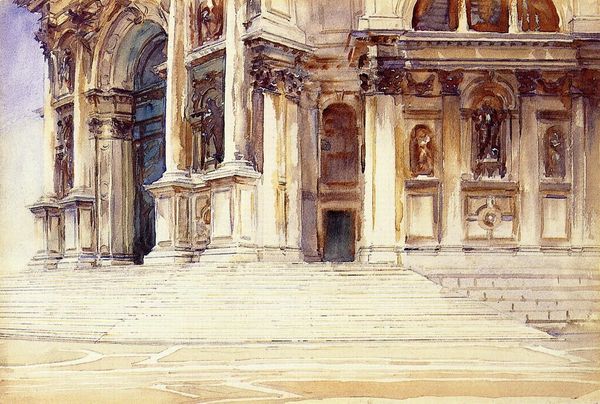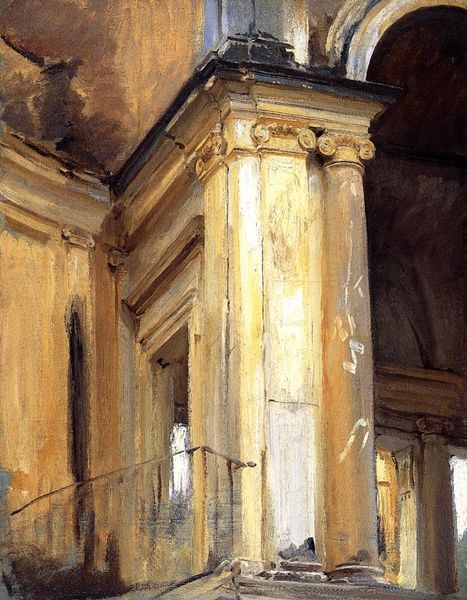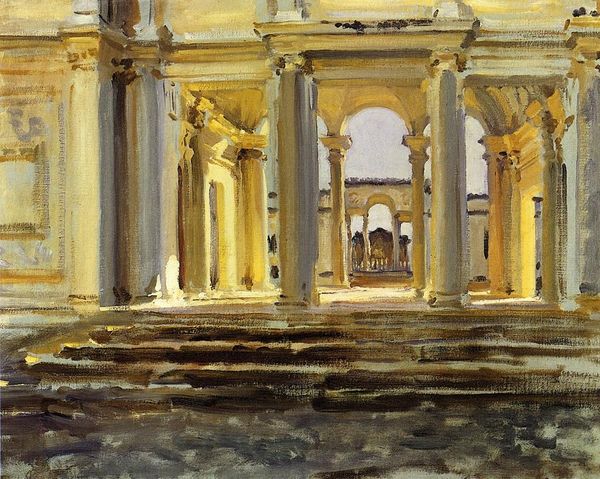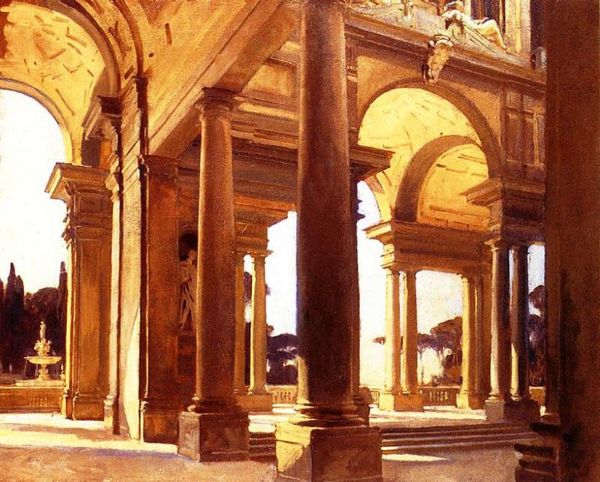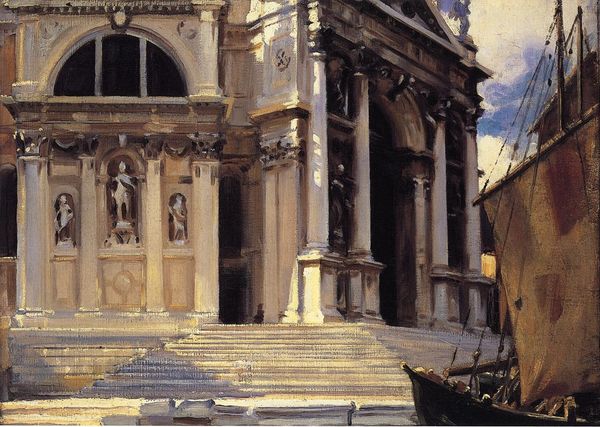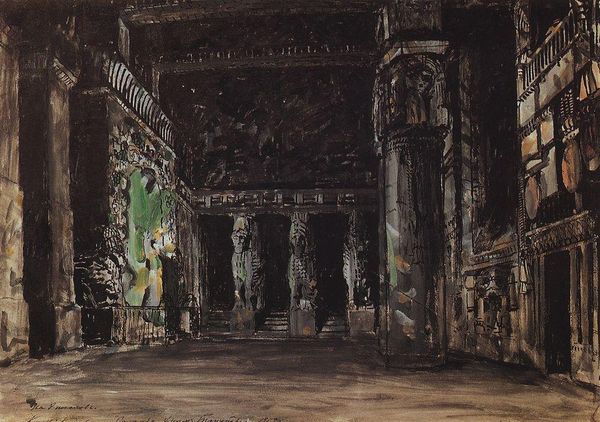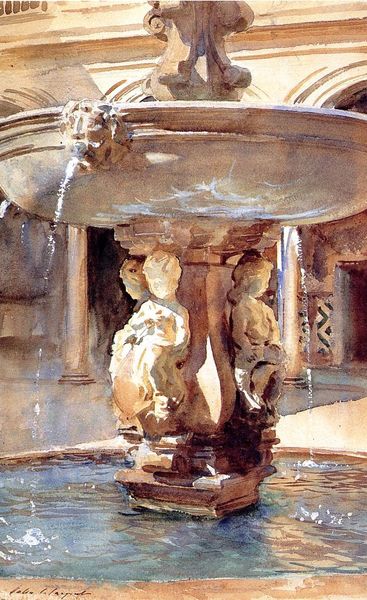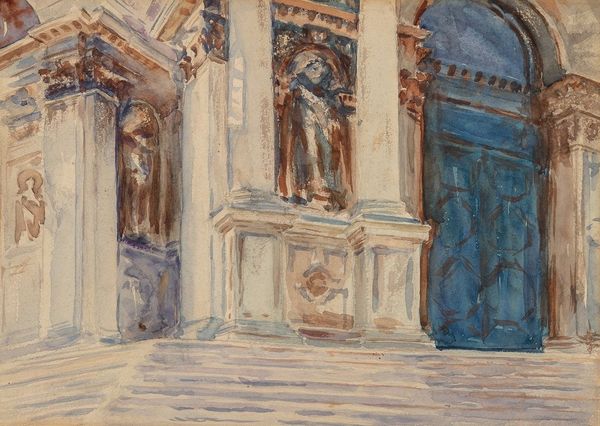
#
urban landscape
#
abstract painting
#
street view
#
street art
#
urban cityscape
#
oil painting
#
city scape
#
street graffiti
#
urban life
#
urban art
#
building
Copyright: Public domain
Curator: Sargent’s "Church of San Stae, Venice," painted in 1913, offers a fascinating snapshot of urban life captured in oil on canvas. Editor: My first impression is the way the light renders the stonework almost ephemeral; it is as if solid structure is becoming pure luminescence. There's such movement in what should be fixed. Curator: Indeed, the painting seems less about the architectural precision and more about how Sargent engages with material conditions. The way the boats and cloth interact at the foreground is an indication of how human intervention and industry shaped the city and altered its meaning. The tactile qualities of the painting's surface itself underscores that interaction between human beings and nature. Editor: But there's the iconographic presence of San Stae itself, hinting at Venice's complex past. San Stae—Saint Eustace—represents a fascinating blend of Christian and classical symbolism. Note the classical facade itself, how the statues reference ideals of virtue and sacrifice. The whole space whispers of layered cultural meanings and memory. Curator: The quick, broken brushstrokes challenge our usual understanding of value, creating this sense of almost blurred vision. Notice also how there's nothing precious about the rendering itself—he approaches stone and fabric with the same vigorous mark-making, thus creating an interesting equivalency between supposedly distinct materials and also a democratic relationship between subject matter and painting technique. Editor: That contrast—between the temporal brushwork and the timelessness that a building can stand for—creates such an engaging tension. Those fleeting strokes make me ponder the layers of meaning embodied within those classical forms. What narratives are encased in those statues and reliefs and why do they seem at odds with the rapid brushwork? Curator: I've always felt this tension draws our attention to painting itself as a type of labor. By showcasing his brushstrokes so blatantly, Sargent directs attention to the act of painting rather than simply what’s being painted. Editor: It becomes an emblem of the constant play between human stories, spiritual aspiration, and material realities, all captured within that unique Venetian light. Curator: Precisely, a space where material and metaphorical collide. Editor: Yes, a testament to art’s capacity to fuse time and tradition into a singular, illuminated vision.
Comments
No comments
Be the first to comment and join the conversation on the ultimate creative platform.

